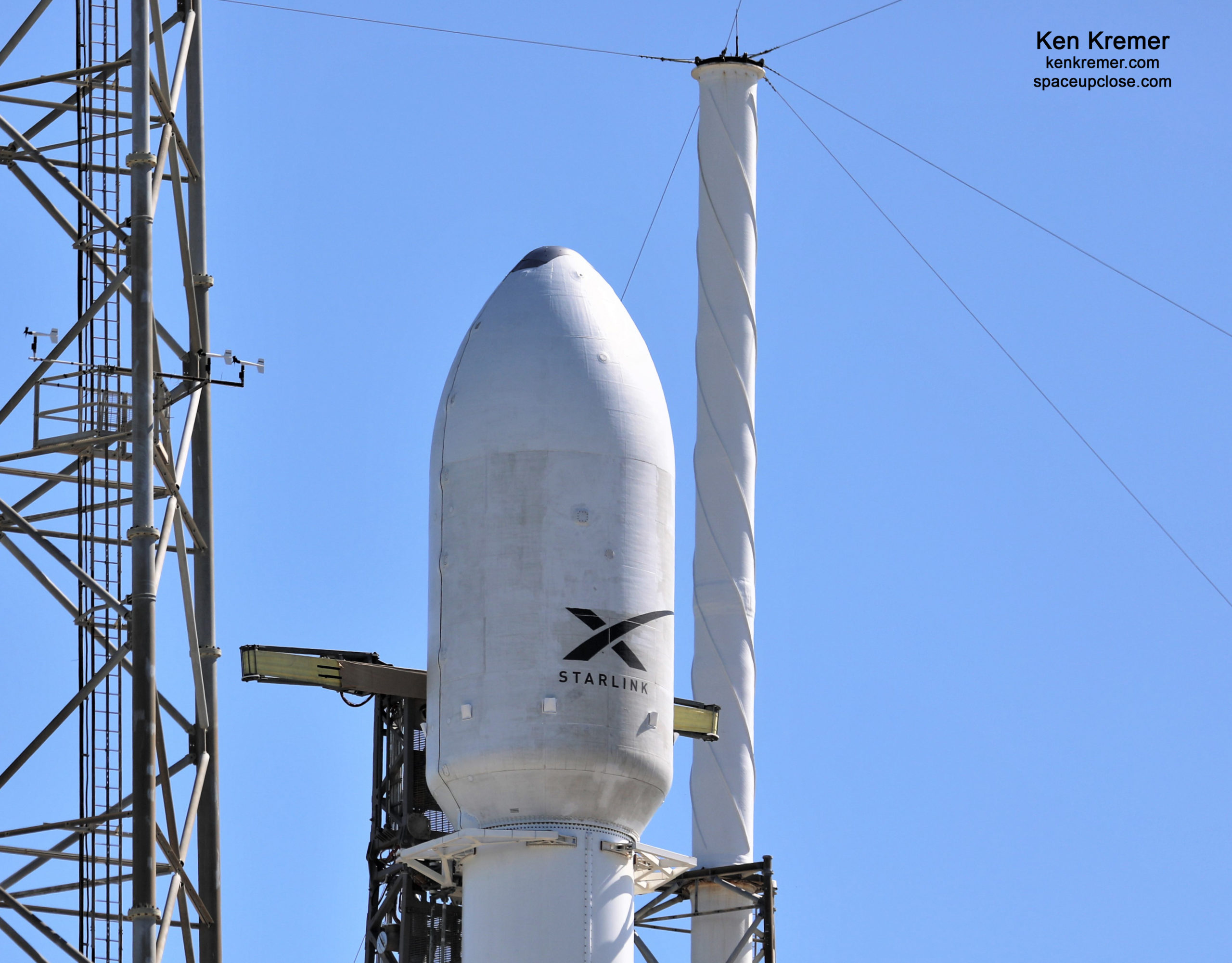
For SpaceUpClose.com & RocketSTEM
CAPE CANAVERAL SPACE FORCE STATION, FL – SpaceX is poised for the firms third launch in two weeks from the Florida Space Coast early Saturday with the next big batch of Starlink broadband internet satellites flying along with their inaugural mission in SpaceX’s SmallSat Rideshare Program – and the weather looks promising on the eve of blastoff.
A trio of Planets’ SkySat Earth-imaging satellites is mounted as the secondary payload atop 58 of SpaceX’s Starlink internet satellites as the primary payload for Saturdays ride to space on this first ever SpaceX rideshare mission.
Liftoff is targeted for Saturday, June 13 at 5:21 a.m. EDT, 921 GMT for launch of its SpaceX’s ninth Starlink mission from Space Launch Complex 40 (SLC-40) at Cape Canaveral Air Force Station, FL.
You can watch the launch live via SpaceX webcast: spacex.com/launches
Live launch coverage will begin about 15 minutes before liftoff.
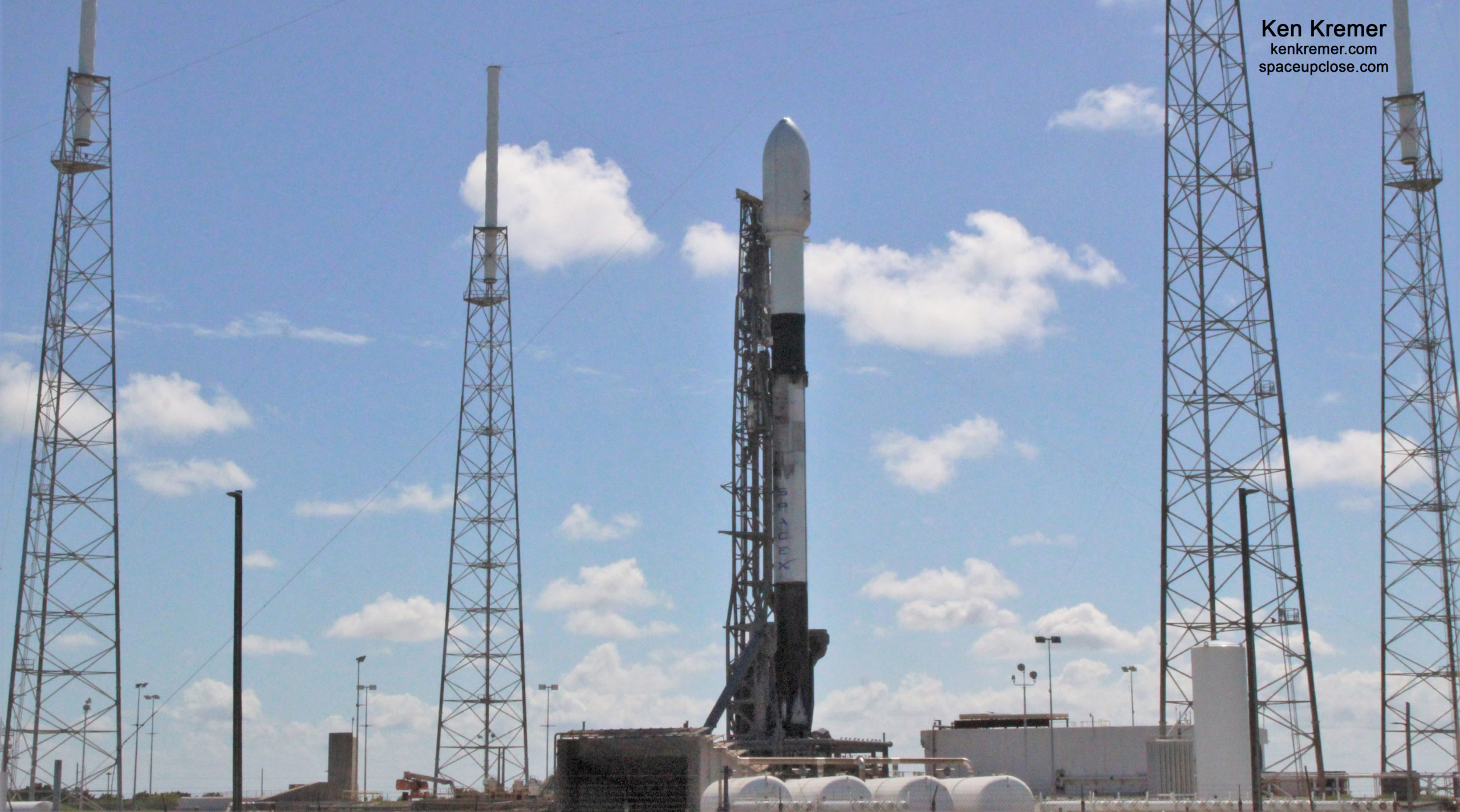
In case of a delay for weather or technical reasons a backup launch opportunity is available on Sunday, June 14 at 4:59 a.m. EDT, 859 GMT.
Enjoy our SpaceX UpClose photos of the Falcon 9 rocket and payload raised erect at pad 40 taken this afternoon, Friday, June 12.
Weather forecasters with the 45th Weather Squadron predict a 70% chance of acceptable conditions at launch time Saturday. That drops to 60% GO on Sunday.
SpaceX deleted two of their home manufactured Starlink comsats to make way for three of Planet’s SkySats imaging satellites.
The Falcon 9 rocket was raised vertical starting around 3:45 p.m. ET this afternoon as myself and several other media were on hand to watch as part of our remote camera setup.
The Falcon 9 erection operation took about 20 minutes from horizontal to vertical on the transporter erector.
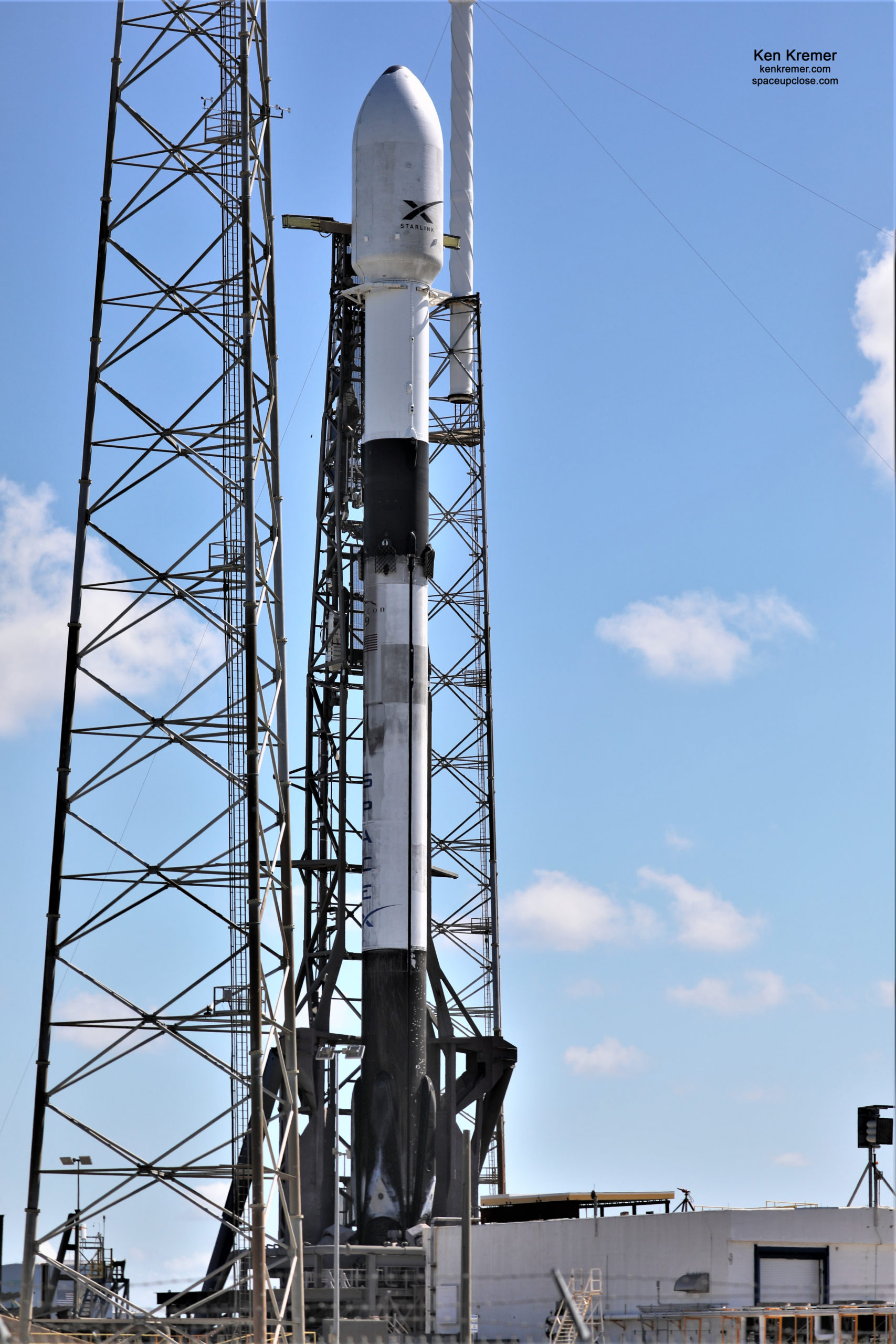
Planet tweeted this photo of their three SkySats 16-18 housed atop 58 Starlink comsats and being encapsulated inside the Falcon 9 nose cone.
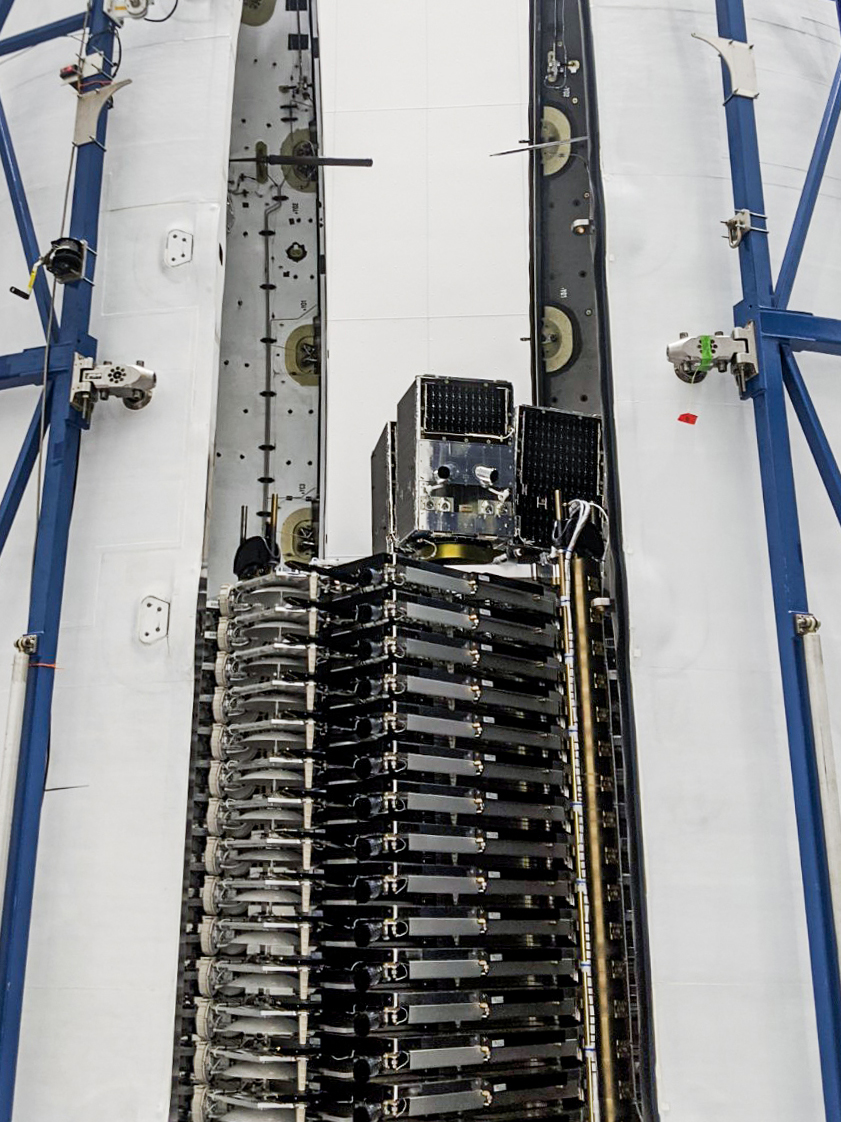
“Launch day is nearly here for SkySats 16-18! The sats will be hitching a ride on @SpaceX’s Falcon 9 on June 13 – their 1st Starlink Rideshare Program launch. Check out our blog for info on these SkySats and how they’ll compliment our 15 already in orbit,” Planet tweeted.
Launch day is nearly here for SkySats 16-18! The sats will be hitching a ride on @SpaceX's Falcon 9 on June 13 – their 1st Starlink Rideshare Program launch. Check out our blog for info on these SkySats and how they’ll compliment our 15 already in orbit. https://t.co/oeas2gkYru pic.twitter.com/OSafVlACxm
— Planet (@planet) June 11, 2020
For the first time in a long time SpaceX did not carry out their requisite static fire test of all 9 first stage Merlin 1D engines – which is routinely done to check the status of the rocket and pad systems and ensure and confirm their readiness for launch.
This recycled Falcon 9 first stage will be flying for the third time – after previously launching a duo of Dragon cargo missions for NASA to the International Space Station (ISS) on the CRS-19 and CRS-20 missions.
https://mobile.twitter.com/SpaceX/status/1271116917420388352
https://mobile.twitter.com/SpaceX/status/1271116918871609344
Both payload fairings encapsulating the satellites are also recycled.
“Half of Falcon 9’s fairing previously flew on the JCSAT-18/Kacific1 mission, and the other half previously flew on SpaceX’s third Starlink mission,” said SpaceX officials.
SpaceX will attempt to land the booster a fourth time and catch the payload fairings.
Following stage separation, SpaceX will land Falcon 9’s first stage on the “Of Course I Still Love You” (OCISLY) droneship, which will be stationed in the Atlantic Ocean about 400 miles (640 km) downrange off the Carolina’s coast.
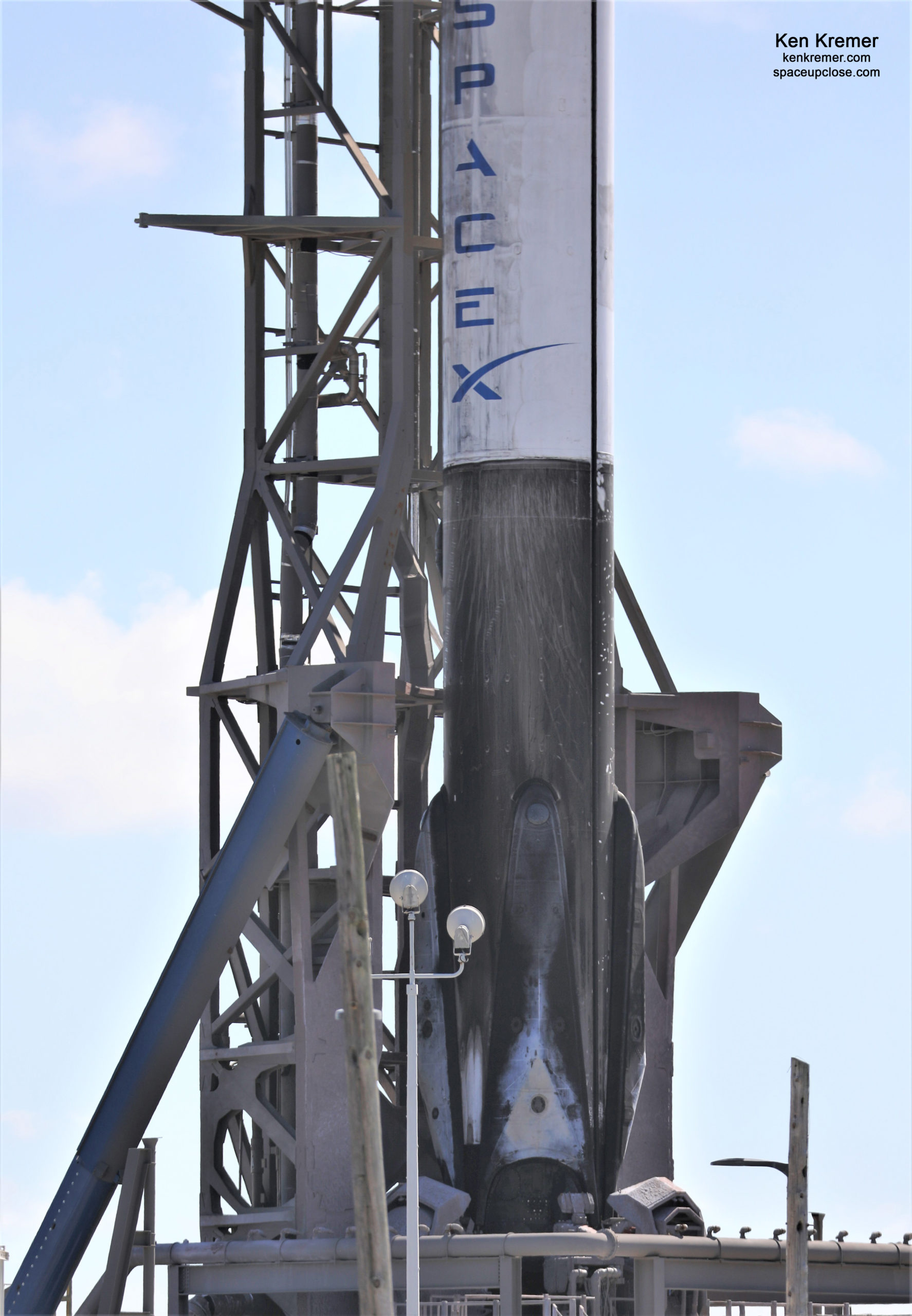
The two special fairing boats GO Ms TREE and GO ME CHIEF have also deployed downrange with giant nets.
After reaching orbit Planet’s SkySats will deploy sequentially beginning about 12 minutes after liftoff, and the Starlink satellites will deploy approximately 26 minutes after liftoff, says SpaceX.
The prior 8th Starlink mission launched last week on June 3 and the booster returned to Port on June 7.
Before that 2 NASA astronauts launch on a Falcon 9 on the DEmo-2 mission on May 30.
Documented in our earlier articles and photos.
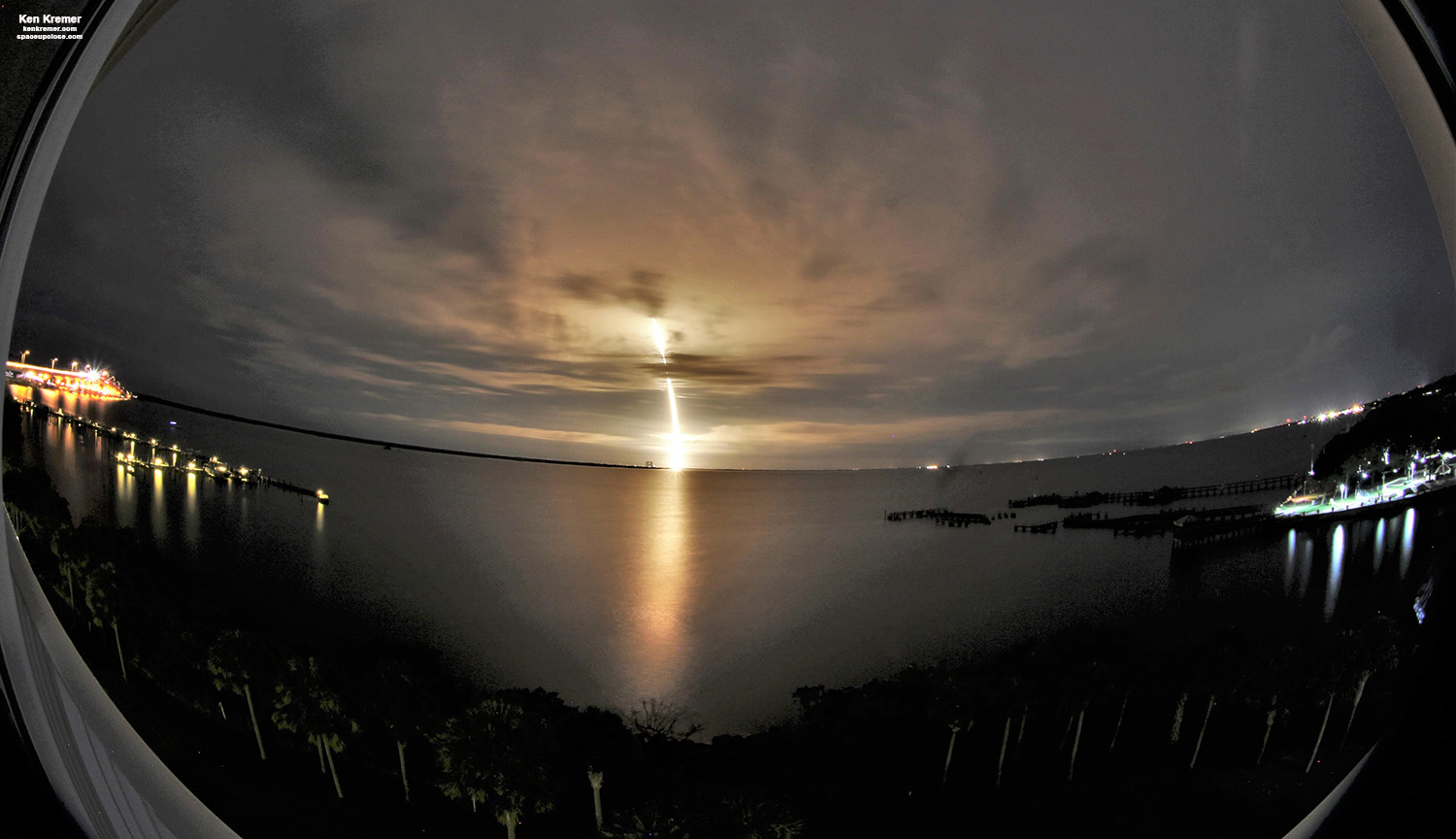
Watch Ken’s continuing reports about Commercial Crew and Artemis and onsite for live reporting of upcoming and recent SpaceX and ULA launches including Demo-2, Starlink, X-37B, Solar Orbiter, Mars 2020 and more at the Kennedy Space Center and Cape Canaveral Space Force Station.
Stay tuned here for Ken’s continuing Earth and Planetary science and human spaceflight news: www.kenkremer.com –www.spaceupclose.com – twitter @ken_kremer – email: ken at kenkremer.com
Dr. Kremer is a research scientist and journalist based in the KSC area, active in outreach and interviewed regularly on TV and radio about space topics.
………….
Ken’s photos are for sale and he is available for lectures and outreach events
Ken’s upcoming outreach events:
Jun 12: 7 PM, Quality Inn Kennedy Space Center, Titusville, FL. “SpaceX Demo-2 and Starlink launches and NASA/ ULA Atlas V Mars 2020 rover and more launches” Free. In hotel lobby. Photos for sale
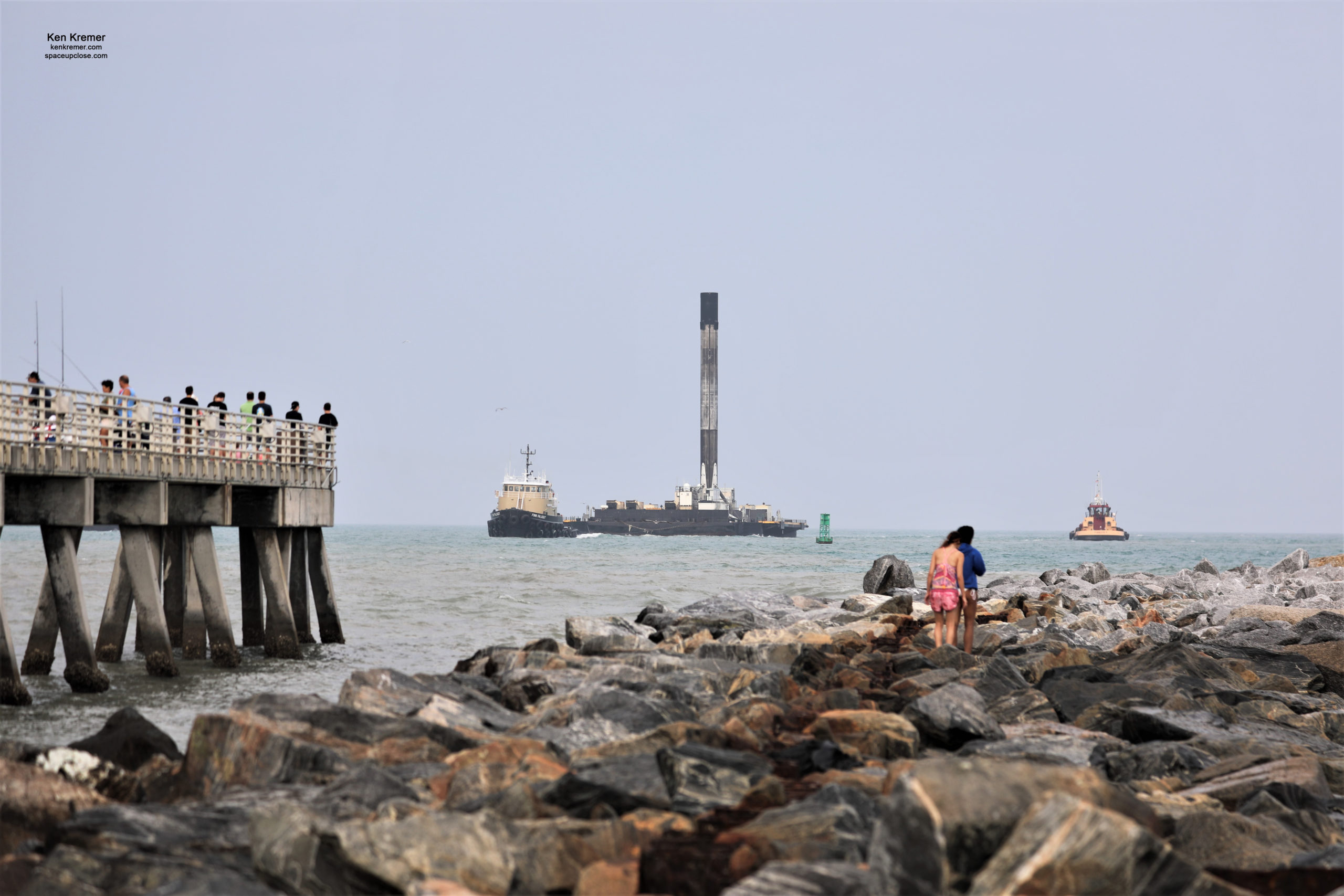
x




